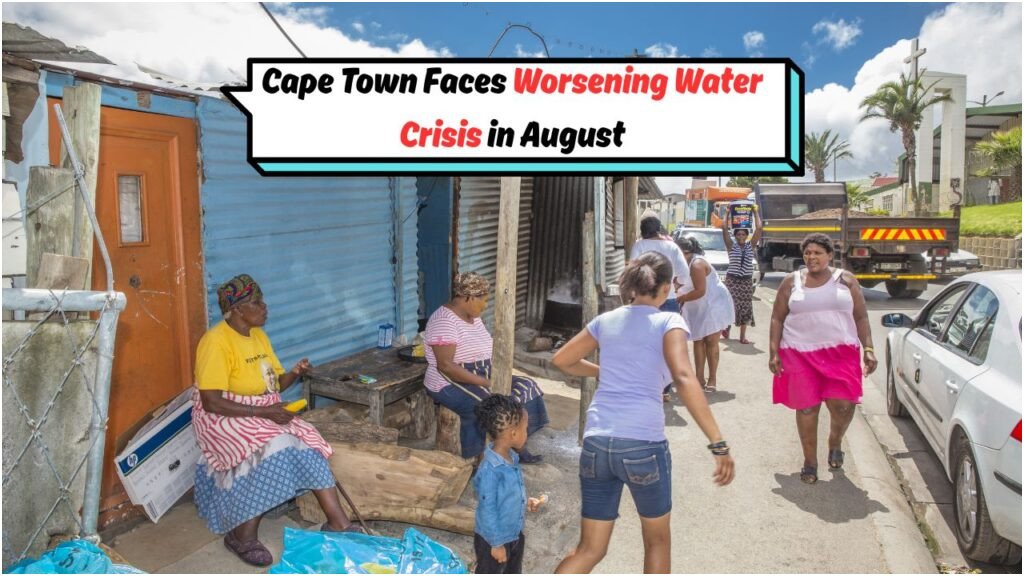Why Cape Town’s Water Pipes Dried Up Overnight Without Warning: The sudden drying up of water pipes in Cape Town has left residents concerned and searching for answers. This unexpected event has sparked a wave of inquiries and debates about the city’s water management and infrastructure. With Cape Town being a key tourist destination and an essential hub for South Africa, the disruption has significant implications for both residents and businesses. The reasons behind this incident are complex and multifaceted, involving a combination of infrastructure challenges, policy decisions, and unforeseen environmental factors. Let’s delve into the details to understand why this happened and what steps are being taken to resolve the situation.
Understanding the Water Infrastructure in Cape Town
The water infrastructure in Cape Town is a sophisticated network designed to supply millions of residents with clean water daily. Despite being well-developed, the city’s infrastructure faces challenges due to aging pipes, growing demand, and climate change impacts. These challenges have been exacerbated by a recent series of unusual weather patterns.
- Aging pipes prone to leaks and blockages.
- Increased demand due to population growth.
- Climate change leading to unpredictable weather.
- Delayed upgrades and maintenance.
- Budget constraints impacting infrastructure projects.
How Policy Decisions Impacted Cape Town’s Water Supply
Policy decisions play a crucial role in the management of water resources in Cape Town. The allocation of funds, prioritization of projects, and strategic planning are all influenced by governmental policies. Unfortunately, recent policy decisions may have inadvertently contributed to the sudden water pipe issues.
| Policy | Impact | Challenges | Solutions | Timeline |
|---|---|---|---|---|
| Funds Allocation | Limited budget for upgrades | Resource scarcity | Revised budget | Q4 2023 |
| Project Prioritization | Delayed pipe replacements | Increased leaks | Accelerated projects | Q1 2024 |
| Climate Response | Inadequate adaptation | Weather impacts | Strategic adaptation | Ongoing |
Environmental Factors Contributing to the Crisis
Cape Town’s water crisis is not solely due to human factors; environmental influences have also played a significant role. The city has experienced erratic weather conditions, including unexpected droughts and intense rainfall. These changes have strained the existing water systems, leading to unforeseen disruptions.
 SASSA Child Grant: R560 Payments Set for August 22, 2025 – Ensure Your Bank Details Are Up-to-Date!
SASSA Child Grant: R560 Payments Set for August 22, 2025 – Ensure Your Bank Details Are Up-to-Date!
- Unpredictable droughts reducing water reserves.
- Heavy rainfall causing infrastructure damage.
- Temperature fluctuations affecting water quality.
- Natural disasters increasing maintenance needs.
- Changes in seasonal rainfall patterns.
Immediate Measures to Restore Water Supply in Cape Town
In response to the crisis, the city has implemented several immediate measures to restore water supply and minimize disruptions for residents. These measures include emergency repairs, strategic water rationing, and public awareness campaigns to conserve water.
- Emergency repairs on key pipelines.
- Strategic water rationing to manage supply.
- Public awareness campaigns on water conservation.
- Collaboration with environmental experts.
Long-term Solutions for Sustainable Water Management
Experts suggest that long-term solutions are essential to prevent future crises. These solutions focus on sustainable water management practices, infrastructure upgrades, and improved policy frameworks to ensure a reliable water supply for Cape Town’s growing population.
Key Long-term Strategies:
- Investment in modern infrastructure technologies.
- Development of alternative water sources.
- Implementation of comprehensive conservation policies.
- Establishment of a crisis response team.
Community Engagement in Water Conservation Efforts
Community engagement is vital for the success of water conservation efforts in Cape Town. By involving residents in decision-making and educating them on sustainable practices, the city can foster a culture of conservation and resilience against future water-related challenges.
Benefits of Community Engagement:
 NSFAS R5,200 Allowance Deposits Begin September 8, 2025 – Ensure Your Bank Details Are Correct
NSFAS R5,200 Allowance Deposits Begin September 8, 2025 – Ensure Your Bank Details Are Correct
- Increased public awareness and responsibility.
- Enhanced cooperation between citizens and authorities.
- Development of innovative local solutions.
- Reduction in water wastage and misuse.
Monitoring and Evaluation of Water Management Strategies
Effective monitoring and evaluation are crucial for assessing the impact of implemented strategies and ensuring continuous improvement in water management. Regular assessments, data analysis, and feedback loops are necessary to adapt to changing circumstances and achieve sustainable water use.
Monitoring Tools and Techniques:
| Tool | Purpose | Outcome | Frequency |
|---|---|---|---|
| Water Usage Data | Track consumption patterns | Identify trends | Monthly |
| Infrastructure Audits | Assess system condition | Plan upgrades | Biannually |
| Feedback Surveys | Gather public input | Improve strategies | Quarterly |
| Environmental Sensors | Monitor weather impacts | Adapt policies | Ongoing |
FAQ Section
What caused the sudden water pipe issues in Cape Town?
Several factors, including aging infrastructure, policy decisions, and environmental changes, contributed to the crisis.
How is the city addressing the water supply problem?
Cape Town is implementing emergency repairs, strategic rationing, and public awareness campaigns.
What long-term solutions are being considered?
Investments in infrastructure, alternative water sources, and conservation policies are key strategies.
How can residents contribute to water conservation?
Residents can engage in conservation practices and participate in community initiatives.
Why is monitoring important in water management?
Monitoring helps assess the effectiveness of strategies and adapt to changing conditions.




